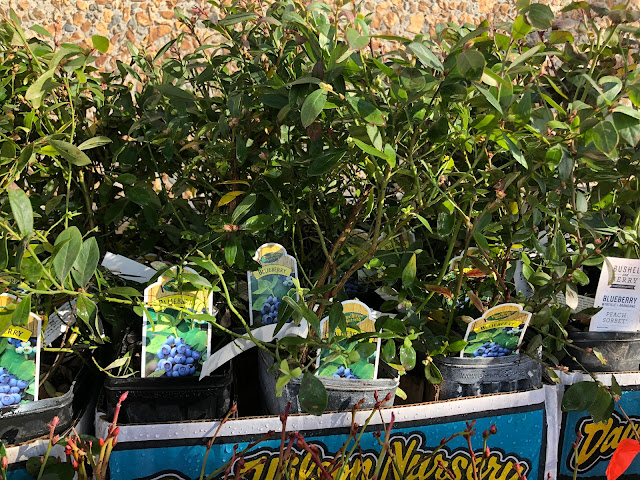
Sunny, dry weather continues; time to get stuff done

|
|
Bare-root blueberries are plentiful in stores now. Bare-root plants offer the best selection
and best prices of the growing year. (Photo: Kathy Morrison)
|
One month wet, the next month dry; that’s been our weather pattern this Sacramento winter. Just as a nearly rainless November was sandwiched between soggy October and December, this very dry January is expected to see no more rain.
According to the National Weather Service, our next chance of precipitation won’t be until early February. Meanwhile, afternoon highs will remain in the 60s, well above our January average of 54. Overnight lows will be normal – 39 degrees – with foothill areas perhaps seeing a touch of frost early Monday morning.
This dry spell is not good news for water watchers. January averages 3.64 inches of rain in Sacramento. So far, January’s total for downtown Sacramento: 0.05 inches.
This lack of precipitation coupled with warmer than average temperatures and strong wind means your garden is likely getting thirsty. Seedlings and new transplants will need a deep soaking. So will anything planted in containers.
Otherwise, make use of these sunny days. There’s a lot to do in the winter garden:
* Prune, prune, prune. That includes most deciduous trees, shrubs and roses.
* Prune Christmas camellias ( Camellia sasanqua ), the early-flowering varieties, after their bloom. They don’t need much, but selective pruning can promote bushiness, upright growth and more bloom next winter. Feed with an acid-type fertilizer. But don’t feed your Japonica camellias until after they finish blooming next month. Feeding while camellias are in bloom may cause them to drop unopened buds.
* Clean up leaves and debris around your newly pruned roses and shrubs. Put down fresh mulch or bark to keep roots cozy.
* Apply horticultural oil to fruit trees soon after a rain to control scale, mites and aphids. Oils need 24 hours of dry weather after application to be effective.
* This is also the time to spray a copper-based oil to peach and nectarine trees to fight leaf curl.
* When forced bulbs sprout, move them to a cool, bright window. Give them a quarter turn each day so the stems will grow straight.
* Divide daylilies, Shasta daisies and other perennials.
* Cut back and divide chrysanthemums.
* Plant bare-root roses, trees and shrubs.
* Transplant pansies, violas, calendulas, English daisies, snapdragons and fairy primroses.
* In the vegetable garden, plant fava beans, head lettuce, mustard, onion sets, radicchio and radishes.
*Plant bare-root asparagus and berries as well as root divisions of rhubarb.
* In the bulb department, plant callas, anemones, ranunculus and gladiolus for bloom from late spring into summer.
* Plant blooming azaleas, camellias and rhododendrons. If you’re shopping for these beautiful landscape plants, you can now find them in full flower at local nurseries.
Comments
0 comments have been posted.Sacramento Digs Gardening to your inbox.
Sites We Like
Garden Checklist for week of July 21
Your garden needs you!
* Keep your vegetable garden watered, mulched and weeded. Water before 8 a.m. to reduce the chance of fungal infection and to conserve moisture.
* Feed vegetable plants bone meal, rock phosphate or other fertilizers high in phosphate to stimulate more blooms and fruiting. (But wait until daily high temperatures drop out of the 100s.)
* Don’t let tomatoes wilt or dry out completely. Give tomatoes a deep watering two to three times a week.
* Harvest vegetables promptly to encourage plants to produce more. Squash especially tends to grow rapidly in hot weather. Keep an eye on zucchini.
* Pinch back chrysanthemums for bushy plants and more flowers in September.
* Remove spent flowers from roses, daylilies and other bloomers as they finish flowering.
* Pinch off blooms from basil so the plant will grow more leaves.
* Cut back lavender after flowering to promote a second bloom.
* It's not too late to add a splash of color. Plant petunias, snapdragons, zinnias and marigolds.
* From seed, plant corn, pumpkins, radishes, winter squash and sunflowers.